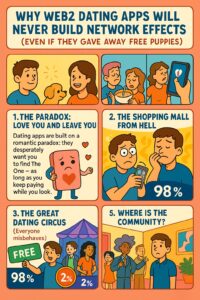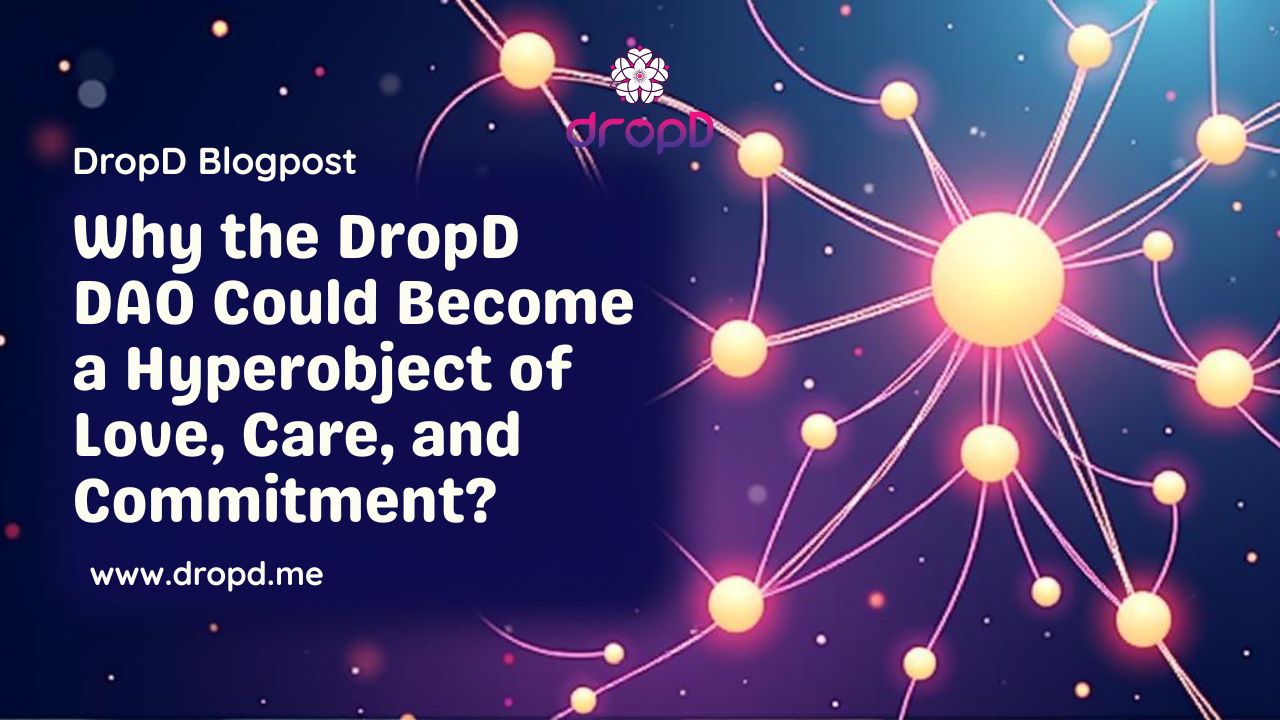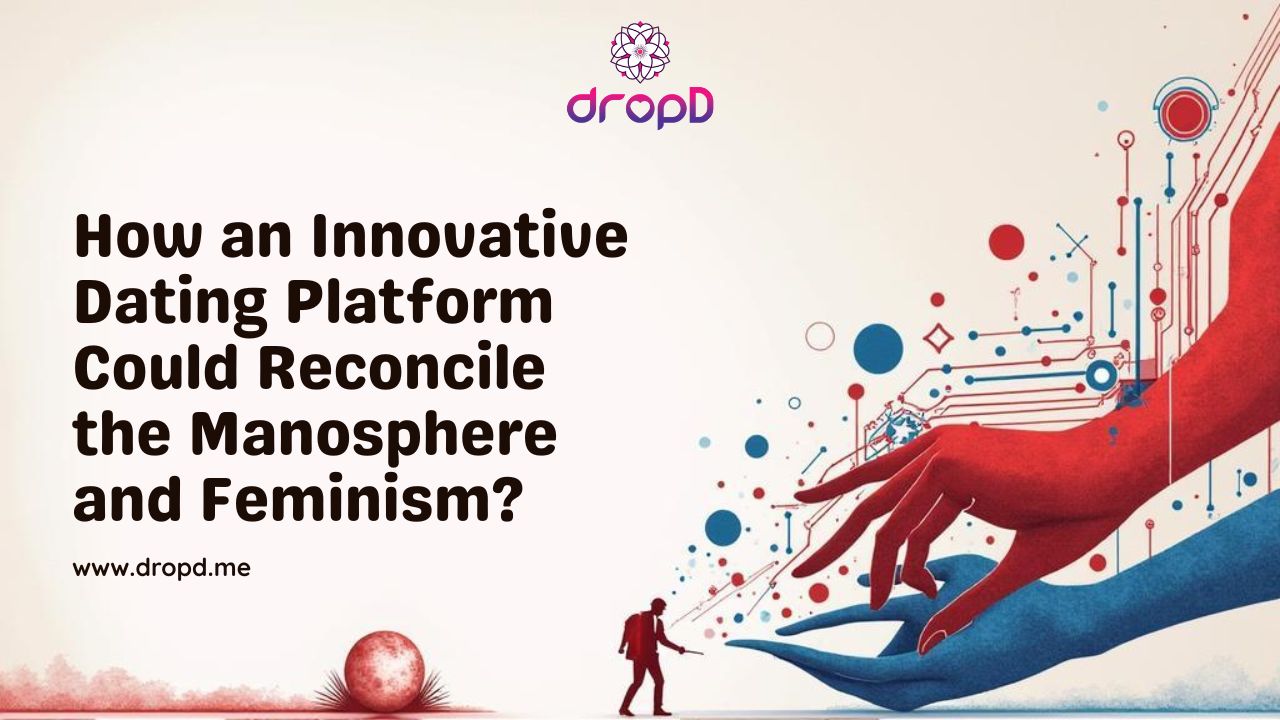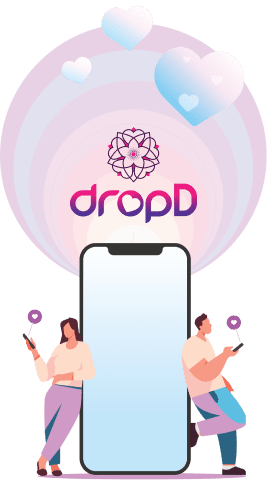Let’s face it — dating should be simple.You meet someone, sparks fly, you fall in love, realize they eat cereal with orange juice, and then respectfully block them forever. That’s life.
But thanks to a world where your thumb gets more action than your heart, we now have thousands of dating apps — each promising true love, soulmates, and the occasional creepy “u up?” DM at 2 AM.
And yet, despite all this digital matchmaking mayhem, dating apps remain the awkward kid in the tech ecosystem — never quite growing up into the social media giants they so desperately want to be. So, why is that?
Here’s a closer look at the tragic (but hilarious) love story between Web2 dating apps and the elusive concept of network effects.
- The Paradox: Love You and Leave You
Dating apps are built on a romantic paradox: they desperately want you to find The One, as long as you keep paying while you look.
In an ideal world, you’d match with your dream partner on day three and disappear into blissful off-the-grid coupledom. But in app world, that’s a nightmare. You leaving = revenue leaving.
Unlike social networks that thrive on daily logins and oversharing, dating apps’ best-case scenario is also their worst nightmare: success. They design for churn. It’s like a gym that only makes money if you never get fit.
Talk about toxic relationships.
- The Shopping Mall from Hell
Using most dating apps is like walking into a mall with 10,000 stores, all yelling “I’m the one!” at the same time — but you forgot what you came in for and you’re suddenly overwhelmed by choice and faint perfume samples.
Swipe fatigue is real.
Users are served endless profiles in a glorified meat market. It’s fun… until it isn’t. After 500 swipes and zero serotonin, what people want is a curated, intelligent system — something between a wise village matchmaker and a clairvoyant therapist.
Instead, they get “Hot or Not: Infinity Edition.”
And the worst part? Users ask for both infinite options and meaningful connections. That’s like asking your Tinder date to be both a wild adventurer and own a 401(k). Good luck balancing that.
- The Freemium Freeloader Fiasco
Ah, yes, the freemium model: come for free, stay for hope, pay for disappointment.
Dating apps usually offer free entry with premium features like “see who liked you,” “super like,” and “please love me back.” But guess what? 98% of users won’t pay. They’re just here for the vibes — and maybe to accidentally match with their boss.
This leaves 2% of users funding everyone else’s emotional rollercoaster, while the app tries to convince investors that heartbreak scales.
Unlike big social platforms that make money selling ads based on your friends’ vacation photos, dating apps can’t keep you long enough to even show you ads. Unless someone figures out how to monetise ghosting.

Why-Web2-Dating-Apps-Will-Never-Build-Network-
Effects?
- The Great Dating Circus (Everyone misbehaves)
Let’s break down the ecosystem:
- Men swipe like they’re on autopilot, matching with anything that moves.
- Women, drowning in likes, become hyper-selective, like Beyoncé at a local talent show.
- Entrepreneurs keep launching new apps using the same old swiping interface, like reheating soggy fries and calling it innovation.
- The industry as a whole? Trapped in a cycle of copy, paste, consolidate, and regret.
It’s not matchmaking. It’s mayhem. A behavioural economist’s fever dream with no sign of a stable social structure or, dare we say, network effect.
- Where is the community?
Let’s talk community — or the complete lack of it.
Social platforms grew because they created places. You had your friend circle, your memes, your embarrassing high school photo albums. It felt personal, like a messy but familiar digital living room.
Dating apps? They’re more like hotel lobbies. Flashy, anonymous, and everyone’s pretending they’re not desperately alone at 11 PM on a Wednesday.
There’s no reputation, no shared history, no structure. You don’t build roots. You plant nothing, harvest matches, and leave before anyone learns your last name.
And without community, there’s no stickiness. Without stickiness, there’s no network effect. Without a network effect… well, you’re just another app trying to sell love in a pop-up tent.
Why Cupid Can’t Code
- Their entire existence of dating apps hinges on users leaving ASAP, but not before paying.
- They give you too much choice, and then blame you for not choosing.
- They rely on a freemium model that bleeds cash first and then hope.
- Everyone’s playing their own game and somehow everyone loses.
- And they forgot the one thing that makes platforms powerful: a real community.
So, What Would Work?
Maybe — just maybe — it’s time to stop building digital slot machines and start building digital neighbourhoods. Places where people:
- Signal more than their filtered selfies
- Form micro-communities, not swipe paradise
- Get rewarded for showing up and bringing commitment to the table
- Give 100% users social value, 10% would multiply it with financial value
In other words, stop optimising design for candy flavour and start optimising for actual connection. Because love may be unpredictable… but a decent platform shouldn’t be.
Join the DropD App now.
Also. Read our previous blogs here.






Leave A Comment